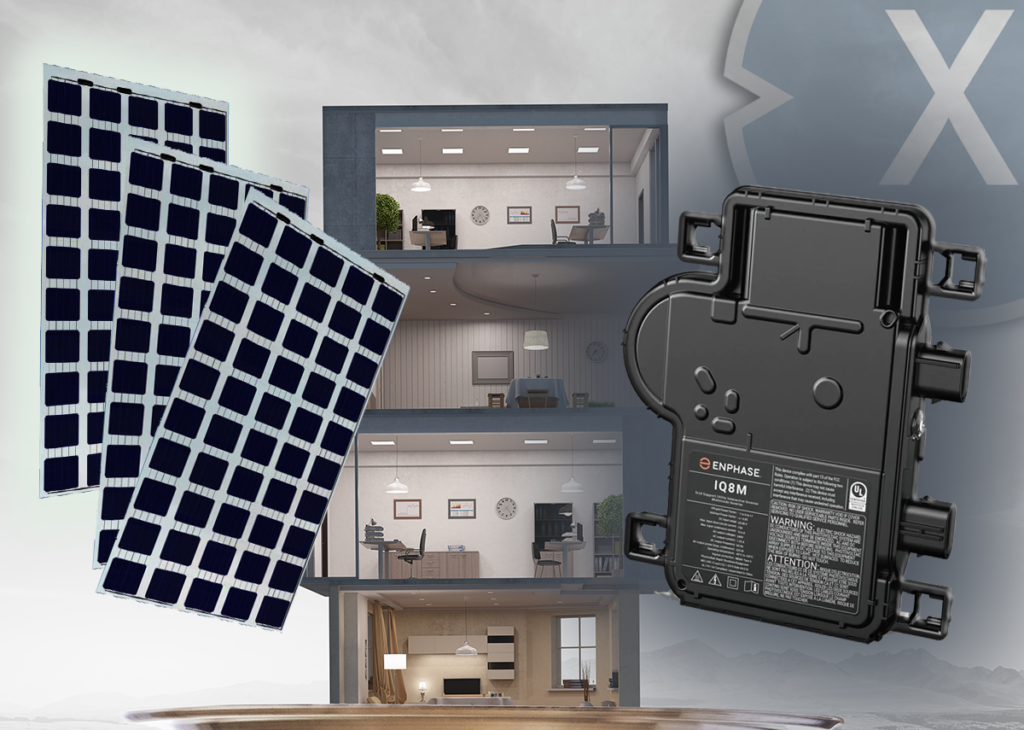Solar inverters convert the alternating current (AC) generated by solar panels into the direct current (DC) used by home appliances. Microinverters, often overshadowed by traditional string inverters, possess unique advantages that can enhance the efficiency and performance of solar installations. In this guide, we will explore the working principle of microinverters, their pros and cons, and factors to consider when deciding if they are suitable for your solar energy needs.
What are Solar Microinverters? Microinverters are small devices used in solar systems to convert the direct current (DC) generated by individual solar panels into the alternating current (AC) used in homes. Unlike traditional string inverters that connect multiple solar panels together and convert their combined output, microinverters work on a one-to-one basis. This means each solar panel has its own microinverter.
This additional safety feature is particularly important for residential installations.
One of the most significant disadvantages of micro-inverters is the higher initial cost. Compared to traditional string inverters, it increases the cost of solar systems by 30%. Installing micro-inverters requires the installation of multiple devices (one per panel), making the installation process more complex than a single string inverter. This complexity leads to longer installation times and increased labor costs. However, the good news is that micro-inverters currently use MC4 connectors for quick installation; some solar panel manufacturers assemble micro-inverters and solar panels in the factory, producing AC modules. Power output is limited in larger systems with micro-inverters, sometimes less efficient than high-capacity string inverters, especially when scaling up. This means that while they are well-suited for medium to small installations, larger installations do not achieve the same level of efficiency. More components to maintain for micro-inverters means an increased number of parts that could fail. This leads to higher maintenance requirements and more frequent inspections to ensure everything is running smoothly. The cost of individual micro-inverters generally ranges from $150 to $300. For a complete solar system using micro-inverters, the total cost is higher than using traditional string inverters due to the increased number of components. The cost of a complete solar installation using micro-inverters generally ranges from $15,000 to $30,000. 1. Enphase IQ Series Product advantages: The latest models, such as IQ7, IQ7+, and IQ7X, offer high efficiency (up to 97%). They feature a compact and lightweight design, easy to install. Integrated monitoring of individual panel performance. They work well under various conditions, including partial shading. 2. SolarEdge P860 Product advantages: Offers a unique architecture that pairs micro-inverters with power optimizers, thereby increasing overall system efficiency. Allows panel-level monitoring and performance tracking. Ideal for systems with mixed panel orientations and shading scenarios. Known for high reliability and long warranty periods (up to 25 years). 3. YC600 from Product advantages: Dual-module micro-inverters connect two solar panels, making them efficient for residential systems. High efficiency (up to 95.5%) and strong performance under low-light conditions.Integrated monitoring system for easy tracking of panel performance. Designed to be compatible with various solar panels, providing flexibility for system design.
Advantages of Delta SMI series products: Compact design and high efficiency (about 95%). Supports module-level monitoring and performance data collection. Built-in safety features including quick shutdown function. Suitable for residential and small commercial applications. Advantages of Fronius Primo product: Although Fronius is mainly a string inverter, it also offers Fronius Symo which can be paired with microinverters for increased flexibility. Efficient and comprehensive monitoring through Fronius Solar.web platform. Known for its strong manufacturing quality and excellent customer support. Advantages of SMA Sunny Boy product: Although it is mainly a string inverter, it can be combined with microinverters to optimize performance. Efficient and with advanced monitoring capabilities. Flexible installation options and compatibility with various types of solar panel types. When should you choose a microinverter? If your roof has one part facing east and another part facing west, a microinverter is a good choice. If your solar panels may be shaded by trees, buildings or other structures at different times of the day, microinverters are especially useful. With microinverters, each panel can operate independently, so if one panel is shaded, it will not affect the performance of other panels. If your roof has panels on sloped sections and other panels are flat, regardless of the angle of the sloped panels, the flat panels will perform at their best. Frequently Asked Questions about microinverters: Are microinverters compatible with all types of solar panels? Microinverters are compatible with most types of solar panels, including monocrystalline, polycrystalline and thin film panels. What is the installation process of microinverters? The installation process of microinverters includes installing the inverter on the back of each solar panel and connecting it to the panel and the grid. Are there any incentives or rebates for installing a microinverter system? Many governments and utility companies offer incentives and rebates to encourage the adoption of solar energy, including the installation of microinverters. These incentives can help offset the upfront cost of installing solar microinverters, making it more affordable for homeowners and businesses. Get your solar quote! Unleash the solar potential SEL! We customize solar systems specifically according to your unique needs to ensure you get the most efficient and cost-effective solution.Our competitive prices and commitment to quality make transitioning to solar not just an option, but an opportunity. Additionally, we offer free personalized solar solutions tailored to your lifestyle and budget.
Don’t wait any longer — contact us now to receive your custom solar quote and embark on your journey to sustainable energy!
